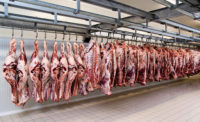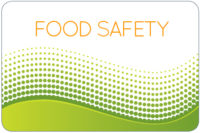Tech | Supplier's Perspective
Water acidification: how much and when for broilers?

The move to reduced-use and no-antibiotics-ever production systems is prompting the broiler industry to explore other tools, not just for managing gut health but also for reducing the number of foodborne pathogens.
Good digestive health is a first barrier in chicken immunity. Any tools or management practices that might inhibit or reduce colonization of pathogenic bacteria should be considered — with water acidification being one of them.
How water acidification works
Acidifying drinking water lowers the pH, which will ultimately translate into acidifying the bird’s crop, the area where food is temporarily stored after it passes through the esophagus.
What’s really happening is that the supplemental acids in the drinking water pass through the gut, where they separate in the upper gastrointestinal tract, lowering the pH inside the bacteria.
The bacterial cells then need to utilize their energy to restore the pH, disrupting the bacteria’s metabolism and preventing the pathogenic bacteria from surviving.
Research shows that birds are tolerant of a pH ranging from 4 to 8 on a continuous basis, and that a lower water pH reduces populations of bacteria such as Salmonella, Campylobacter and Clostridia in the crop before they reach the lower digestive system.
Acidified drinking water has also been shown to help mitigate the adverse effects of stress.
Birds consume nearly twice as much water as they do feed. While water is an important element of bird nutrition, it can also be an entryway for disease. Water lines can harbor pathogens, especially from a biofilm buildup, but lower water pH reduces scale and biofilm.
No one-size-fits-all approach
Lots of companies are trying different things, including organic acids, probiotics and sanitizers, but what works best for one farm complex might not work as well for another.
Some products are less palatable because of water being too acidic, while lowering the pH too much can harm equipment over prolonged periods.
Regardless of what producers decide to use, it needs to be easy to handle and administer. If it’s not easy to mix, or it’s not clear how to use it, there’s a risk of using too much.
While there are considerable potential benefits to be gained from water acidification, there’s no one-size-fits-all approach.
Minimize potential food-safety risk
Many poultry farms use some type of water acidifier 72 hours before feed withdrawal to acidify the bird’s crop and reduce bacterial populations.
But not many utilize water acidification during the first couple of weeks of the bird’s life.
Lowering the pH through water acidification early in the flock and prior to processing helps mitigate the potential food-safety risk of pathogenic bacteria such as Salmonella.
Looking for a reprint of this article?
From high-res PDFs to custom plaques, order your copy today!







